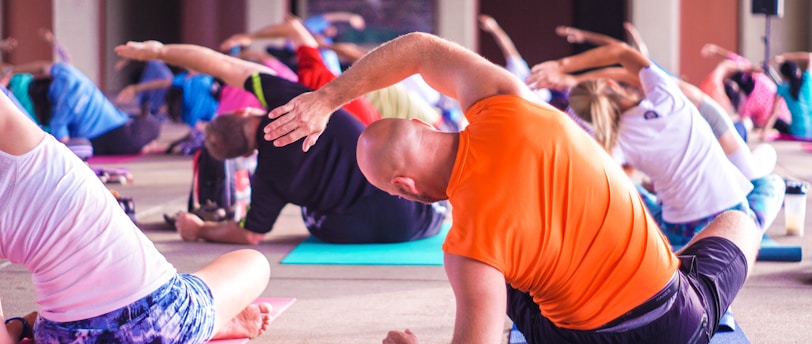The Importance of Stretching in Calisthenics and Top Stretches to Incorporate
Calisthenics, a form of exercise that utilizes bodyweight movements, has gained popularity in recent years due to its effectiveness in building strength, flexibility, and overall fitness.
1/14/20243 min read


Introduction
Calisthenics, a form of exercise that utilizes bodyweight movements, has gained popularity in recent years due to its effectiveness in building strength, flexibility, and overall fitness. While many people focus on the strength-building aspect of calisthenics, it is equally important to incorporate stretching into your routine. In this article, we will explore the reasons why stretching is crucial in calisthenics and discuss some of the best stretches to include in your training regimen.
The Benefits of Stretching in Calisthenics
1. Increased Flexibility: Stretching helps improve flexibility by increasing the range of motion in your joints and muscles. This is particularly important in calisthenics, as many exercises require a high level of flexibility to perform correctly. By regularly stretching, you can enhance your ability to perform advanced movements and reduce the risk of injury.
2. Injury Prevention: One of the key reasons to incorporate stretching into your calisthenics routine is to prevent injuries. When you stretch, you warm up your muscles, increase blood flow, and prepare your body for the demands of exercise. This helps reduce the risk of strains, sprains, and other common injuries associated with calisthenics.
3. Improved Performance: Stretching can also enhance your performance in calisthenics. By increasing your flexibility, you can achieve better form and technique in each exercise, leading to more efficient movement patterns. This, in turn, can result in improved strength gains and overall performance.
4. Reduced Muscle Soreness: Engaging in intense calisthenics workouts can often lead to muscle soreness. Stretching after a workout can help alleviate this soreness by promoting blood flow and reducing muscle tension. It also aids in the removal of waste products, such as lactic acid, which can accumulate during exercise.
Top Stretches for Calisthenics
Now that we understand the importance of stretching in calisthenics, let's explore some of the best stretches to incorporate into your training routine:
1. Downward Dog
The Downward Dog stretch targets the shoulders, hamstrings, calves, and back. Start in a push-up position with your hands shoulder-width apart and your feet hip-width apart. Push your hips up and back, forming an inverted V shape with your body. Hold the stretch for 30 seconds, focusing on lengthening your spine and pressing your heels towards the ground.
2. Cobra Stretch
The Cobra stretch is excellent for opening up the chest, stretching the abdominals, and strengthening the lower back. Lie face down with your palms on the floor, slightly wider than shoulder-width apart. Push your upper body up, keeping your hips and legs on the ground. Hold the stretch for 30 seconds, focusing on keeping your shoulders relaxed and your gaze forward.
3. Lunge Stretch
The Lunge stretch targets the hip flexors, quadriceps, and hamstrings. Start in a lunge position with one foot forward and the other foot extended behind you. Keep your front knee directly above your ankle and your back leg straight. Lean forward slightly to deepen the stretch. Hold for 30 seconds on each side.
4. Butterfly Stretch
The Butterfly stretch is great for opening up the hips and stretching the inner thighs. Sit on the floor with the soles of your feet touching each other. Hold onto your ankles and gently press your knees towards the ground. Hold the stretch for 30 seconds, focusing on keeping your back straight and your chest lifted.
5. Shoulder Stretch
The Shoulder stretch targets the shoulders, chest, and upper back. Stand with your feet shoulder-width apart and interlace your fingers behind your back. Gently lift your arms away from your body, keeping them straight. Hold the stretch for 30 seconds, focusing on squeezing your shoulder blades together.
6. Hamstring Stretch
The Hamstring stretch is essential for improving flexibility in the back of the thighs. Sit on the floor with one leg extended in front of you and the other leg bent with the sole of your foot against your inner thigh. Lean forward, reaching towards your toes, and hold the stretch for 30 seconds on each leg.
Conclusion
Incorporating stretching into your calisthenics routine is crucial for improving flexibility, preventing injuries, enhancing performance, and reducing muscle soreness. By regularly performing the top stretches mentioned above, you can optimize your calisthenics training and achieve better results. Remember to always warm up before stretching and listen to your body to avoid overstretching or causing any discomfort. Happy stretching!
Subscribe newsletter
info@caliathlete.com
+91 98965-12147
